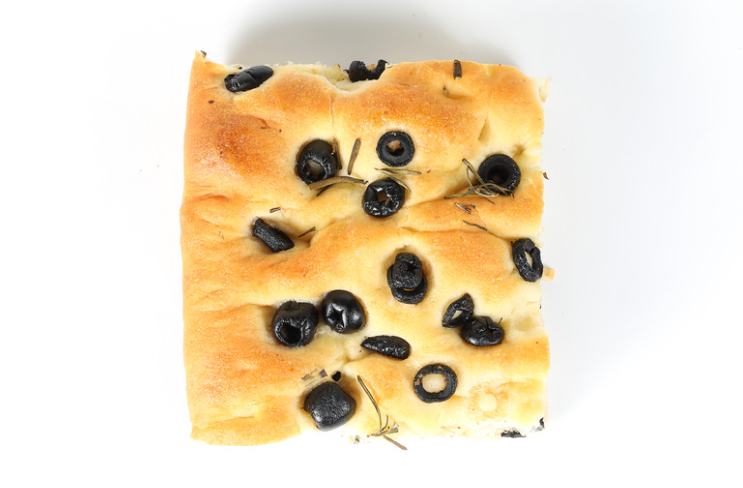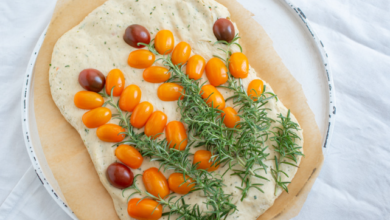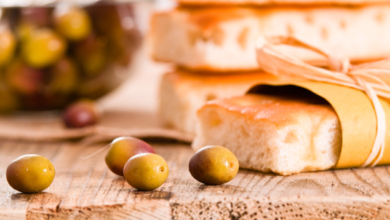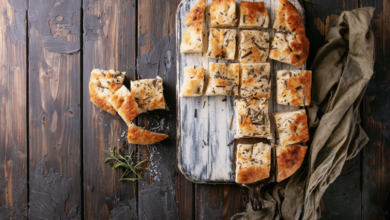Why is my focaccia dry? Find out the reasons here!

What To Know
- If the dough is too dry, it will not rise properly and will result in a dense, crumbly texture.
- However, over-proofing can lead to a breakdown of the gluten strands, resulting in a weak dough that cannot hold its moisture.
- By understanding the common causes of dry focaccia and following the tips outlined in this guide, you can elevate your baking skills and create a masterpiece that will delight your taste buds.
Focaccia, with its pillowy texture and tantalizing golden crust, is a culinary masterpiece. However, even the most seasoned bakers can encounter the dreaded dry focaccia. If you’ve found yourself asking, “Why is my focaccia dry?”, this comprehensive guide will help you pinpoint the root cause and achieve focaccia perfection.
Common Causes of Dry Focaccia
1. Inadequate Hydration
Focaccia relies heavily on hydration for its moist interior. If the dough is too dry, it will not rise properly and will result in a dense, crumbly texture. Ensure that you accurately measure the liquids and add enough water or oil to create a soft, supple dough.
2. Over-proofing
Proofing allows the dough to rise and develop flavor. However, over-proofing can lead to a breakdown of the gluten strands, resulting in a weak dough that cannot hold its moisture. Follow the recommended proofing time and avoid over-fermenting.
3. Insufficient Salt
Salt not only enhances flavor but also strengthens the dough’s structure. Too little salt can weaken the gluten, leading to a dry, flat focaccia. Measure the salt accurately and do not skimp on this essential ingredient.
4. Incorrect Baking Temperature
The oven temperature plays a crucial role in focaccia’s texture. If the oven is too hot, the outside will burn while the inside remains undercooked. If the oven is too cool, the focaccia will not rise properly and will be dense. Preheat the oven accurately and adjust the temperature as needed.
5. Shallow Baking Dish
Using a baking dish that is too shallow will prevent the focaccia from rising to its full potential. Choose a baking dish that is deep enough to allow the dough to expand without touching the edges.
6. Lack of Olive Oil
Olive oil is essential for creating the focaccia’s signature golden crust and moist texture. Drizzle a generous amount of olive oil on top of the dough before baking to promote even browning and prevent dryness.
7. Insufficient Baking Time
Underbaking focaccia will result in a doughy interior and a lack of crispiness. Bake the focaccia until it reaches an internal temperature of 190-200°F (88-93°C) and the crust is golden brown.
How to Prevent Dry Focaccia
- Measure ingredients accurately: Avoid guesswork and use a kitchen scale to ensure precise measurements.
- Proof correctly: Follow the recommended proofing time and avoid over-fermenting.
- Use enough salt: Enhance flavor and strengthen the dough’s structure by using the correct amount of salt.
- Preheat the oven properly: Ensure the oven is at the correct temperature before baking.
- Choose a deep baking dish: Allow the dough to rise to its full potential by using a baking dish with sufficient depth.
- Drizzle with olive oil: Promote even browning and prevent dryness by drizzling a generous amount of olive oil on top of the dough.
- Bake thoroughly: Avoid underbaking by monitoring the focaccia’s internal temperature and baking until it reaches the desired level of doneness.
Troubleshooting Tips
- If the focaccia is dry and crumbly: Increase the hydration of the dough by adding more water or oil.
- If the focaccia is dense and flat: Reduce the proofing time or check the strength of the yeast.
- If the focaccia is burnt on the outside but undercooked on the inside: Lower the oven temperature or bake for a shorter period.
- If the focaccia lacks flavor: Increase the amount of salt or add herbs and spices to the dough.
Beyond the Basics
- Experiment with different flours: Whole wheat, rye, or semolina flour can add flavor and texture to your focaccia.
- Add toppings: Enhance the flavor and visual appeal of your focaccia with toppings such as olives, cheese, or herbs.
- Make a focaccia sandwich: Slice the focaccia and fill it with your favorite fillings for a satisfying meal.
Recommendations: The Art of Perfect Focaccia
Achieving perfect focaccia is a culinary endeavor that requires precision, patience, and a touch of experimentation. By understanding the common causes of dry focaccia and following the tips outlined in this guide, you can elevate your baking skills and create a masterpiece that will delight your taste buds.
What You Need to Learn
Q: Why is my focaccia so dense?
A: Over-proofing, insufficient hydration, or a lack of salt can contribute to a dense focaccia.
Q: How can I make my focaccia more flavorful?
A: Experiment with different flours, add herbs and spices to the dough, or top the focaccia with flavorful ingredients.
Q: Can I make focaccia without a stand mixer?
A: Yes, you can knead the dough by hand, but it will require more time and effort.
Q: What is the ideal baking temperature for focaccia?
A: The optimal baking temperature for focaccia is between 450-500°F (232-260°C).
Q: How long should I proof focaccia?
A: The proofing time for focaccia typically ranges from 1-2 hours, depending on the temperature and the strength of the yeast.





